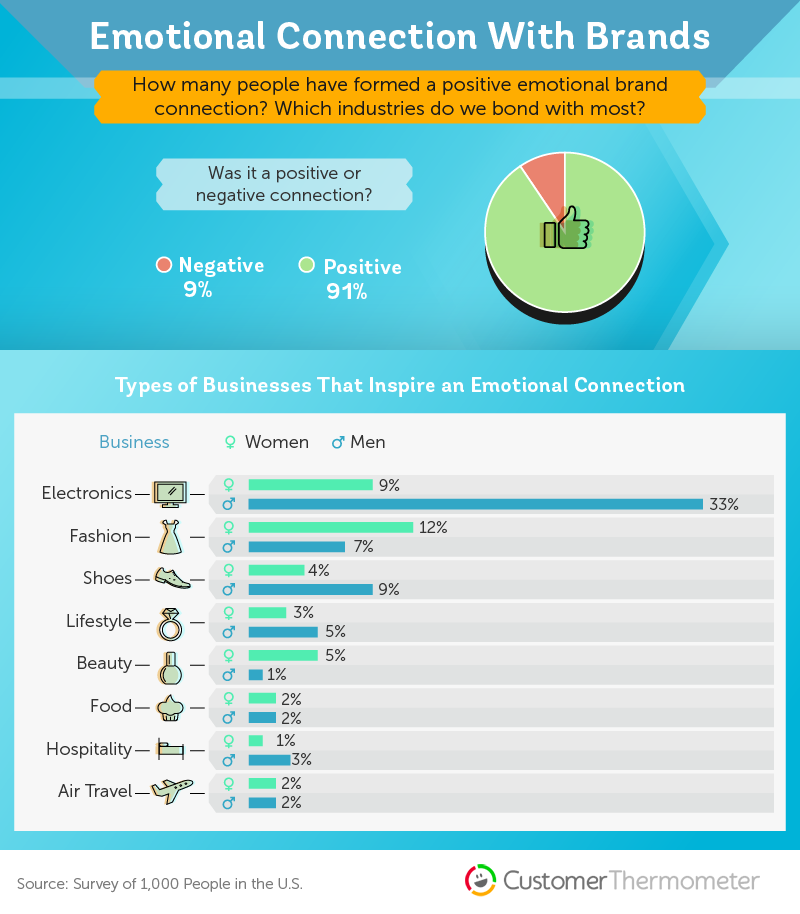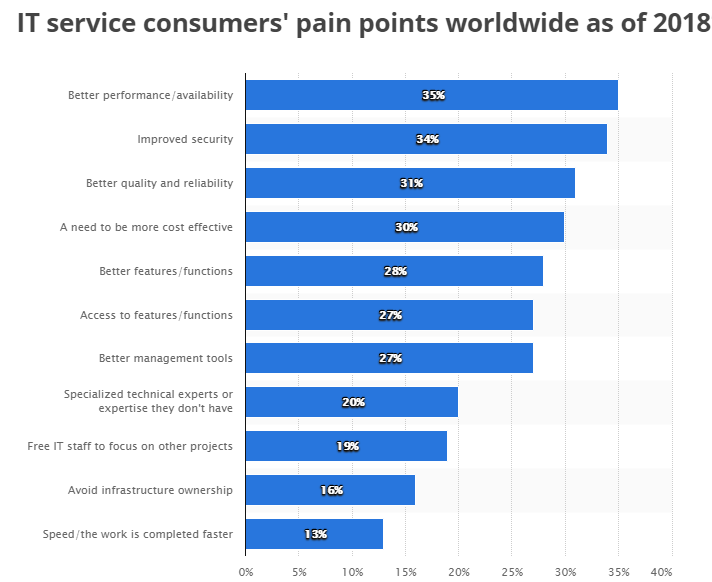Emotion-Driven vs. Data-Driven Branding
Brands have the power to influence consumers’ emotions. The modern consumer expects a brand to have a certain kind of personality.

Using Emotional Branding to Connect with your Customers
According to a report by SproutSocial, 88% of online consumers do not appreciate brands mocking their fans, while 3 in 4 users enjoy encountering humour in marketing. The report states that 71% of internet users find brands engaging in political discourse annoying. Furthermore, Millennials constitute as much as 50% of the entire Twitter and Instagram user base.
Clearly, brands have the power to influence consumers’ emotions. The modern consumer expects a brand to have a certain kind of personality. This is especially true for Millennials and Generation Z. So in order to create such a contemporary brand, marketers need to analyze large amounts of data regarding consumer behaviour. This is why emotion-driven and data-driven branding should go hand in hand.
What is Emotional Branding?
Within marketing communications, emotional branding refers to the practice of building a brand that resonates well with consumers’ emotions, desires, and aspirations. Successful emotional branding triggers an emotional response in the consumer. This creates a desire for a specific service or product that cannot be completely rationalized. Instead of making their purchasing decisions based on facts, consumers’ actions are driven by feelings of love, bonding, or companionship.

Getting Started with Emotion-Driven Branding
If you want to build a brand with strong customer relationships, emotion-driven branding is the way to go. It doesn’t matter which industry your business operates in. Emotional branding works well even in highly-specific B2B markets, but you need to trigger just the right emotional response.

So how do brands decide on the kind of emotion they want to elicit?
Triggering the Right Kind of Emotion
To determine the kinds of emotional triggers that will work best with your buyers, you will need to understand their pain points. Pain elicits intense emotional responses and since emotions justify purchases, this is the best place to start.
But what kinds of emotions should you trigger in your buyers? Well, this depends heavily on what you are selling. For example, if your product is an antivirus software, your key selling points will be reliability and security. Therefore, you want to trigger the feelings of safety and calmness in your consumers. They will come to a purchasing decision much faster if they feel a reliable brand is on their side at all times.
Nurture Customer Relationships
It is important to reinforce the same emotional message with your customers at every contact point. This means you need a unified communication strategy from the beginning. To deliver emotional consistency, use the same vocabulary on social media, your website, or in direct communication with your customers. This way, you will keep emotion in the very heart of the brand promise.

The vocabulary of emotions doesn’t rely only on words. To reinforce emotional messaging at all times, you need to think about the psychology of colours, shapes, music (in video content and podcasts) etc. Many things can carry emotional content, e.g. products, branded merchandise, packaging, and more. When you understand who your potential buyers are and what pain points they have, as well as which emotions make them buy your products, you are well on your way towards establishing an emotion-driven brand.
What about Data?
Data has always played a vital role when it comes to branding. Today, brands are using data intelligence to learn how to approach their potential buyers in the best and most personalized way possible. Brands use this convergence of customer data and emotion to find the right solutions for addressing consumers’ pain points. Through data analysis, you can learn who your consumers are, where they are coming from, what kind of content they prefer, etc. Let’s take a look at how you can create a data-driven brand.
Capitalize on Data Analytics
You don’t have to spend a fortune on data analysis tools to get the information you need. Free tools such as Google Analytics and Google Search Console (GSC) are here to help business owners extract value from their data.
You can use Google Analytics to make sense of data coming from every contact point, be it your blog, website, app, etc. The tool provides you with crucial information on how your buyers interact with your brand. It shows you where your businesses are doing really well, so you can use this information accordingly. The GSC helps you analyze your position on the search engine results pages (SERP). It gives you insight into where the queries for your website are coming from, as well as how well your product and service pages rank on the SERPs.
Using these two tools alone can help you find out which content performs best with certain audiences. Since you are measuring engagement that leads to purchases, these tools can help you increase revenue through simple A/B testing. See what works and what doesn’t and continue with the approach dictated by your audience. Remember, emotion and data must go hand in hand if you really want to build a trustworthy brand. Customers have to feel the right kind of emotion when they interact with your brand and the only way to achieve this is getting to know them through data and behavior analysis.
Why not Both?
The fact is modern consumers care a lot about what brands say and do. They also don’t want to be persuaded into buying anything. They want brands to earn their respect. Learn about the psychology behind emotions and find out what triggers emotional responses from your consumers. Think about both written and visual content and your brand mission in relation to the industry you operate in.
Utilize data in every step of the way, but don’t treat your buyers as mere numbers. Think about personalization, it will help you learn about the different types of buyers and how to approach them. So this is not a question of one vs. the other. It is a statement outlining the importance of the strong bond between data and emotion, especially when it comes to branding.
Really Simple Systems is now Spotler CRM
The same great technology, a CRM platform that is focused on the needs of B2B marketers, provided by the same great team, at a great price!
